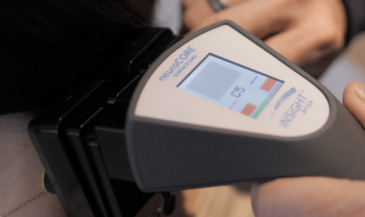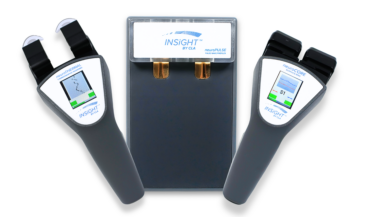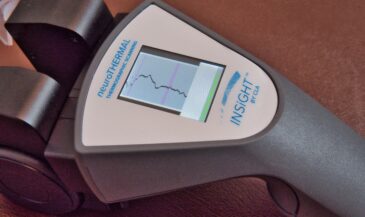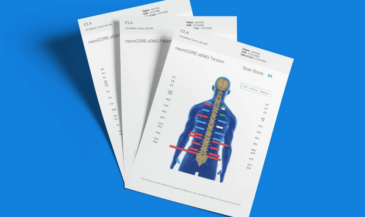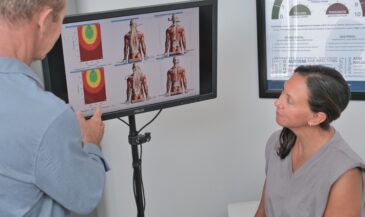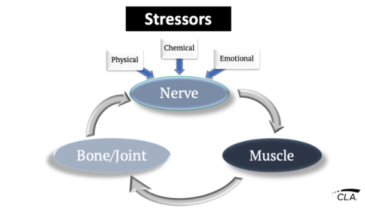By Dr. Christopher Kent
Chiropractors frequently ask me for literature that supports subluxation centered chiropractic. Until recently, it was an arduous task to ferret out the references. Thankfully, the last few years have seen the publication of some outstanding texts. Here are a few important books that many DCs may not be aware of. Add them to your personal library. They will help to provide you with the confidence and certainty needed to more effectively serve your patients.
- “Upper Cervical Subluxation Complex: A RevMay 2004iew of the Chiropractic and Medical Literature.” Kirk Eriksen. Lippincott Williams & Wilkins. 2004. ISBN 0 7817 4198 X. Available at http://www.lww.com.
This book has been more than 10 years in the making. It features abstracts and commentary on nearly a thousand articles from the scientific literature. It features sections on biomechanics, neurology, x-ray analysis, instrumentation, pathophysiology, and case reports. You will find information on everything from ADHD to athletic performance. The comprehensive index makes it easy to find what you need. There are illustrations of x ray changes, SEMG and thermal scans, and anatomy.
The next time someone claims that there is “no scientific evidence” to support subluxation based chiropractic, this book will help you to enlighten the person, or make a liar out of them. Don’t be misled by the title. This book is a must for all chiropractors, not just upper cervical doctors. If you only buy one book this year, make it this one.
- “Somatovisceral Aspects of Chiropractic: An EviMay 2004dence Based Approach.” Edited by Charles S. Masarsky and Marion Todres Masarsky. Churchill Livingstone. 2001. ISBN 0 443 06120 3. Available at http://www.amazon.com.
Chuck and Marion did the profession a tremendous service in bringing together 16 talented authors to create this landmark text. If you want the rationale and clinical data to support the role of chiropractic care in visceral function, this book is for you. Anyone who thinks chiropractic care is of value only in managing musculoskeletal pain needs this book.
The book includes a review of autonomic neuroanatomy, clinical assessments, and discussions of chiropractic care and the cardiovascular, alimentary, and endocrine systems. There are chapters addressing the special senses, and pediatric care. There is a lot of interesting material here, including some fascinating historical information. If you are looking for information on instrumentation from the time of the electroencephaloneuromentimpograph to the latest in surface EMG, it’s here. So is information on Kentuckiana and wellness care. You’ll even find a discussion of functional MRI. There are a lot of great illustrations. The book is amazingly inexpensive. I was honored to contribute a chapter.
“Atlas of Common Subluxations of the Human Spine and Pelvis.” William J. Ruch. CRC Press. 1997. ISBN 0 8493 3117 X. Available at http://www.amazon.com.
Have you ever had someone say, “I’ve never seen a subluxation. Show me one!” No problem. This book features meticulous cadaveric dissections and x rays showing the effects of vertebral subluxations. You will see how degenerative changes affect nerve tissue, and visualize the effects of misalignment, disc bulging, etc.
The amount of work that this involved is mind boggling. It is the result of years of dissection, and correlation of gross and radiographic anatomy. The photos are large and clear. There are some excellent color plates, CT scans, and MRIs as well. The book includes a glossary.
This book goes beyond the lessons learned in BJ’s osteological collection. It includes the associated soft tissue. This book will make you appreciate the importance of our work as chiropractors.
“The 14 Foundational Premises for the Scientific and Philosophical Validation of the Chiropractic Wellness Paradigm.” James L. Chestnut. The Wellness Practice. 2003. Available at http://www.thewellnesspractice.com.
This book includes the reference material from Dr. Chestnut’s acclaimed seminars. If you want a contemporary approach to subluxation pathophysiology, you will enjoy the book. The context is one of wellness rather than disease treatment. The latest addition also covers the stroke issue, physiology of stress, chiropractic and wellness, and pediatrics.
If you can’t attend the seminar, buy the book. Or better yet, do both.
“Case Studies in Chiropractic MRI.” Christopher Kent and Leonard F. Vernon. ICA. 1998. ISBN 1 886190 02 X. Available at http://www.chiropractic.org.
Of course I have to include my own book! If you are interested in learning more about MRI, this book will be of interest. The ICA agreed to publish this book after another publisher rejected it. The other publisher said their “chiropractic” reviewer recommended publication only if the material on vertebral subluxation was removed! This I would not do.
The book features an overview of MRI, followed by a discussion of models of vertebral subluxation. There are sample color fMRI images pre and postadjustment. Besides examples of subluxation related degenerative changes, the book features a sampling of pathologies, including tumors, infections, etc. There are also some examples of extremity studies. And no, I don’t get a royalty on this or any of the other books mentioned in this column.
If you are wondering why these books aren’t required texts at all chiropractic colleges, you are not alone. Our students deserve this information. To suppress it is unconscionable.





